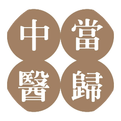

Keywords: 弦脉 (Xian Mai)

With the rapid development of science and technology, as well as information technology, people increasingly feel that they are living in a super fast-paced environment.
We are constantly exposed to various changes and pressures, leading to a growing number of physical issues.
Among those living under high-stress conditions, a common pulse pattern is observed—弦脉 (Xian Mai), which is the topic we will discuss today.

Note, this pulse pattern is relevant to almost everyone, so you need to read carefully.
What is Xian Mai?
Xian Mai, as the name suggests, is a pulse that feels like pressing a string of a musical instrument or a bowstring when the practitioner palpates the patient’s pulse.
Li Shizhen stated:
“Xian Mai is straight and long, like a taut bowstring; it does not move when pressed, and feels like pressing the strings of a zheng (Chinese zither), straight and firm under the fingers.”
This describes Xian Mai as a state of a straight pulse.
At the same time, Li Shizhen also mentioned: “Tight refers to its strength, while Xian refers to its shape.” Here, Li Shizhen corrects the misunderstanding that Xian Mai is a particularly strong pulse.
He clearly pointed out that Xian Mai refers to the shape of the pulse, not the strength of its force.
In simple terms, Xian Mai is just a straight pulse resembling a string, but the string can be either tightly or loosely strung.
A tightly strung pulse can be understood as a 紧脉 (Jin Mai), while Xian Mai is unrelated to the tightness of the force.
What does Xian Mai indicate?
When we are repeatedly in a tense and high-pressure state, the Qi and blood in our body become constrained, resulting in Xian Mai.
Therefore, generally speaking, Xian Mai is often seen in conditions of liver Qi stagnation and liver Yang excess. Patients often experience symptoms such as chest and rib pain, fullness, irritability, and easy anger.
Of course, some patients may also exhibit a tense pulse due to the retention of fluids. In this case, the patient’s tongue coating is slippery and greasy.
The above situations represent the presence of Xian Mai in excess conditions, often appearing as a strong and slippery pulse. If Xian Mai appears in deficiency conditions, it is commonly associated with liver blood deficiency, where the pulse often presents as thin and weak under pressure.
Where is Xian Mai commonly found?
In practical life, Xian Mai is very common and widely distributed across various diseases, such as gastrointestinal disorders, diarrhea, cough, heart disease, liver and gallbladder diseases, kidney diseases, brain diseases, and hypertension.
Various combined pulses are also very common, such as:
Xian Mai combined with a rapid pulse often indicates heat in the liver channel, commonly seen in dizziness, headaches, and insomnia, which can be treated with methods to clear and drain liver fire, such as 龙胆泻肝汤 (Long Dan Cao Decoction);
Xian Mai combined with a slow pulse often indicates cold conditions, commonly associated with cough and wheezing due to cold phlegm attacking the lungs, or headaches and dizziness due to cold phlegm rising, or stomach pain due to cold. Treatment may involve warming and transforming cold phlegm, such as 射干麻黄汤 (She Gan Ma Huang Decoction), 吴茱萸汤 (Wu Zhu Yu Decoction), 良附丸 (Liang Fu Wan), etc.;
Xian Mai combined with a thin pulse often indicates liver blood deficiency, along with liver Qi stagnation, known as liver Qi stagnation with blood deficiency. Treatment may involve soothing the liver and nourishing the blood with formulas like 逍遥丸 (Xiao Yao Wan);
If Xian Mai is thin and combined with a rapid pulse, it indicates Yin deficiency with excess fire, and treatment should focus on nourishing Yin and reducing fire, using formulas like 知柏地黄丸 (Zhi Bai Di Huang Wan), 二至丸 (Er Zhi Wan), etc.;
A hard and strong Xian Mai is often seen in elderly individuals. If the tongue is red with little coating, it indicates Yin deficiency leading to the pulse vessels losing moisture, a condition of Yin deficiency with Yang excess. Treatment should include nourishing Yin and subduing Yang with ingredients like cooked Rehmannia, goji berries, tortoise shell, ophiopogon, dendrobium, Eclipta prostrata, and privet fruit; if the tongue coating is thick and yellow, it indicates phlegm-fire accumulation leading to the pulse vessels losing moisture, and treatment should include herbs like 胆南星 (Dan Nan Xing), 竹茹 (Zhu Ru), 天竺黄 (Tian Zhu Huang), 竹沥 (Zhu Li), 枳实 (Zhi Shi), 钩藤 (Gou Teng) to clear phlegm-fire and calm Yang;
Xian Mai that is large and weak under pressure often indicates deficiency of essence and blood, and treatment should focus on nourishing blood and replenishing essence, using formulas like 八珍汤 (Ba Zhen Tang), 十全大补汤 (Shi Quan Da Bu Tang), etc.;
If Xian Mai is present with cough, treatment should focus on clearing the liver and moistening the lungs, using herbs like 黛蛤散 (Dai He San), 青皮 (Qing Pi), 沙参 (Sha Shen), 桑叶 (Sang Ye), 杏仁 (Xing Ren), etc.
In summary, Xian Mai corresponds to the liver in the five organs and is commonly seen in conditions of liver Qi stagnation, liver fire excess, or liver blood deficiency, but there are also cases of fluid retention.
The appearance of Xian Mai often indicates that your body has been in a state of emotional repression, tension, and fast pace for a long time. At this time, regardless of your illness, you should learn to relax; only then can diseases truly stay away from you; otherwise, even medication may not cure you completely.
Have you learned about today’s pulse? If you have any questions, feel free to leave a comment!
More exciting articles to review:
散脉 (San Mai), this pulse pattern must indicate a serious illness.
微脉 (Wei Mai), what does it indicate about the body’s deficiency?
数脉 (Shu Mai), it is not just about having heat.
细脉 (Xi Mai)—most women have this pulse; what does it indicate?


